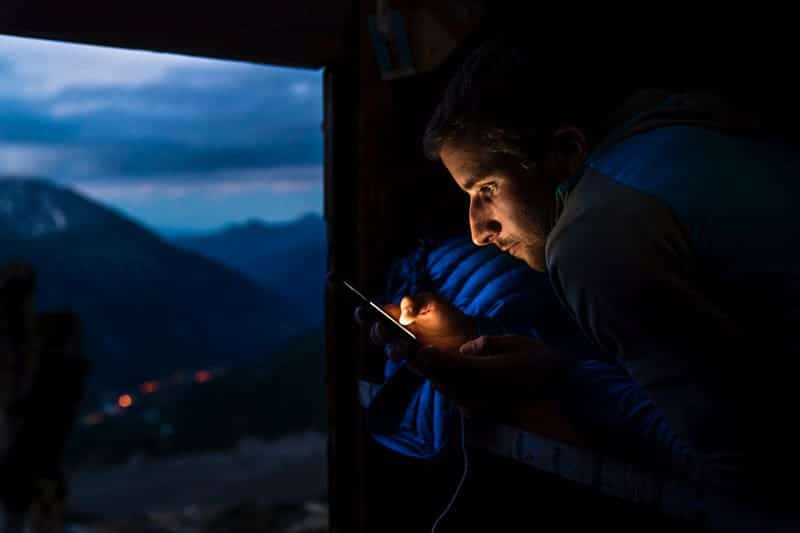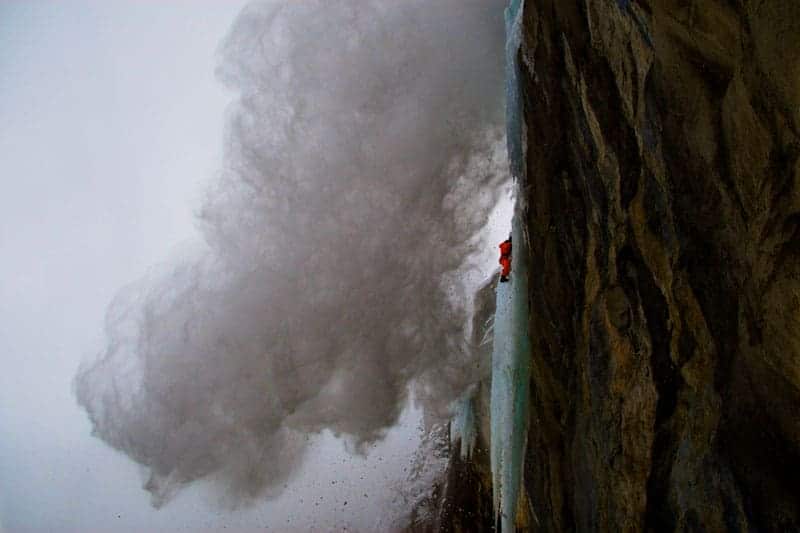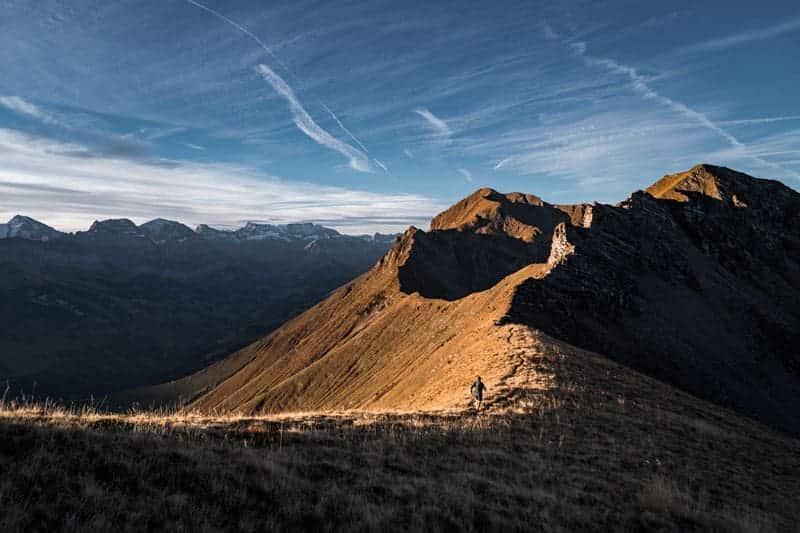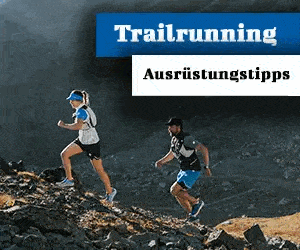Nicolas Hojac is known for his speed ascents on the Eiger north face or the crossing of the triumvirate Eiger, Mönch and Jungfrau in record time. Andreas Haslauer talked to the young Swiss alpinist about his role models, goals and the risk of speed ascents.
The interview was conducted by Andreas Haslauer for Bächli Bergsport
You are only 25 years old, but are already considered a very successful alpinist. In which footsteps would you like to follow? Do you want to become a summit collector like Reinhold Messner, an adrenaline junkie like Alex Honnold or a glacier flea like Kilian Jornet?
I just want to have fun with what I do in the mountains. A drawer in which you could put me, there is not. Luckily. And that's good. Having fun is really about everything. Really over everything. To be happy, to experience beautiful moments up there, to stand above things. That's what satisfies me.
And what happens if you can not be in the mountains for a few days?
The Austrian singer-songwriter Hubert von Goisern has put it aptly, I think. He said that he perceives flat landscapes as "threatening". The singer therefore seeks the silence of the mountains for his lyrics. Without them, he becomes depressed. I feel the same way. I do not like any touristy crowded routes and trails. The peace, the lonely, the seclusion. I like that very much.
Nicolas Hojac during the speed ascent of the trilogy Eiger, Mönch and Jungfrau
For the extreme sportsman Axel Naglich, mountains mean adventure and freedom. Far away from civilization, other, more primitive things would count than in the valley, where things are very complex nowadays.
The simple things stand for a carefree life, not the complex and difficult ones. I'll also tell you why: No matter whether I'm climbing the "Pargätzi pillar" on the Scheideggwetterhorn here in my homeland, making the first ascent of the "Deadmen Peak" in China or if I'm going to Gantrisch with my friend Tanja: If I'm from the mountain I always feel better when I go upstairs. That's so. Always.
What are you planning to do with 2018?
We are currently shooting an ice climbing film for the European Outdoor Film Tour (EOFT). Essentially - and this is my plan for the future - every year I want to do one or two major expeditions in Pakistan or Nepal and set up technically difficult walls like the northeast wall of the K7 or the north face of the Xuelian West. They attract me magically, I want to climb them. But I do not have a bucket list with 100 peaks or something that I really need to go up. Not that one. Nevertheless, I have a big goal for 2018.

And that would be?
On the 19. I already climbed over the summits of Jungfrau, Mönch and Eiger on June 2017. This trilogy I managed in record time 11 hours and 43 minutes. Now I want to increase the matter again this spring. I want to go up to every summit and down the paraglider. So Eiger up, down with the paraglider. Monk up, sail down with a paraglider. Virgo up and down. The bottom line: three north walls, three flights, one destination.
That sounds very ambitious. How long would a normal mountaineer need for such a venture?
Oh, I do not know. Definitely five, six days.
And you?
I think I'll make it under 20 hours.
Which of the three is the hardest?
No mountain, no wall and no passage are comparable to another. Every mountain is unique.
And uniquely dangerous. If you ever slip on the Eiger North Face, it's over.
That's why I always try to never stay up that long. Fast up and fast down. That reduces the danger.
That's what you say. Hans Kammerlander, only 61 years old, says that only Daniel Wellig, Konrad Auer and Reinhold Messner stayed with him. All the other of his mountain mates do not live anymore.
As we say, there really are no safety nets like in ski races, no tire piles like in Formula 1. I am aware of everything. I have already lost two close friends. One from Holland, one from Bern. That's why everything has to go fast for me. The shorter I'm up there, the lower the risk of perishing up there. So if I climb the north face in the morning, then I'm back home in the afternoon for Zvieri.
That does not change the fact that you're dead when you fall down ...
... but not if I am secure. During the speed ascent with Ueli Steck we were both connected to a 30 meter long rope.

But they were not always hooked.
Only on the snow passages and easy routes not. Otherwise already. If the "starter," in which case it was Ueli, would have fallen, nothing would have happened. At least not deadly. There is no guarantee up there anyway. It can still be that the hook breaks out when two people fall at the same time. That's why I do not do that every day. That would be too much for my psyche.
But to your rope partner you need a trust in God.
Ueli and I already knew each other for years. We trained together, were very good friends. For this reason, there is only one other person in this world to whom I would entrust my life in such a wall. And that's Jonah's shield. Reinhold Messner once said it correctly in an interview: "We go where you could perish so you do not perish." If I could not get lost in mountaineering, it would be just a sport, a game. And that's exactly what it is not.
Many still think you're crazy.
I can understand that when you see the pictures. This is not supposed to sound arrogant, but when I climb the north face, my mountaineering skills are not so much demanded. For the wall I do not even have to retrieve 50 percent of my skills. That does not mean, however, that I'm going up with a rest pulse from 48.
What do you have for a pulse in the passage?
My heart rate was significantly higher than that of Ueli in the record climb. That was because as a second man I always had to catch up with him. He was able to keep his pace, I always had to close the gap so that the rope was always under tension. Ueli came up with a maximum pulse from 160, I had 185. Stressed or uncomfortable, I never felt, not a second.
What did you have with you?
Half a liter of water and a power bar.
You study mechanical engineering and still live at home. What do you say to your mother at breakfast? "You, Mommy, I'll take a quick walk through the north face after breakfast".
I can tell you: we already had some discussions at home. At first my mother did not want all that, just not. Then I had to cheat a bit. One day I said to her, "You, we're just going to join the Eiger, look around a bit." She knew for sure we were going to get in the wall. That's why she is so glad that only one of us climbs. My brother is a cook at the Hotel Giardino Mountain in St. Moritz and has no time for mountaineering.
When did you discover the love for the mountains?
With 13. I spent a few weeks vacationing in La Fouly in Valais, Valais, to learn French. In the afternoon we always played football there or were on the mountain bike. Then one day we did a two-day trip. Since then, I'm really infected by the mountains, since then I can not live without them.

To the 14. On a birthday, teens want a Playstation or a new bike. They wanted a four-thousand-year-old.
My parents fulfilled my wish and I was allowed along with a mountain guide on the Lagginhorn in the Valais Alps. I can not tell you how happy I was. And so it went on. With 18 years I climbed for the first time through the Eiger north face, then Matterhorn and Grandes followed Jorasses north face and and and.
How many times have you climbed the Eiger North Face?
Wow, no idea. Maybe twelve or 13 times. I dont know.
Her motto is: "Only an old alpinist is also a good alpinist." Ueli Steck, your longtime rope partner, did not make it. Just 40 years ago, he crashed a year ago during a training tour from Camp II of Mount Everest on the Nuptse deadly.
I do not understand the misfortune until today. Again and again I want to pick up my phone and call him. That's been the 30 since. April 2017 nothing changed. Again and again I want to write him a WhatsApp. I probably have not processed his death properly yet.
Have you even questioned your speed inspections after Steck's death?
Why do I do this? Does that really make sense? Who does that help me if I'm five minutes faster than someone else up there on a summit? I often asked myself these questions after Uelis death. Not today. I know what I've been for since 14. Age of burning. I'm burning for mountaineering. That's not just a hobby of mine, that's my life.
What was Ueli Steck for you?
One of my best friends and an absolute role model. As for many others too. 2004 he climbed up the Excalibur pillar on the U-sticks without rope. That was absolutely unique, nobody has done that yet. Ueli was a pioneer. "Going up there alone is something completely different."
Was mountaineering until then a cumbersome thing with a lot of logistical effort, so it got a new face through Ueli Steck, wrote the journalist Dominik Osswald. Mountaineering also works easily and quickly, the material is kept to a minimum.
That's what I learned from him to move like a chamois in the mountains. No one has raced up the mountains with crampons - until Ueli came. He had no time. I remember exactly when we set our record on the north face of the Eiger. He said to me: "Nicolas, we must not take any time today, I have an appointment at 18 in Münsingen." He was really serious.

Only one question remains: When do you equalize the free-solo record of Ueli Steck on the Eiger?
Going up there alone is something completely different. If I know that nobody can help me up there, then that is already an incredibly strong psychological burden.
When are you ready?
I dont know. The only thing I know is that I would take more risk than Ueli to break the record. At the moment the risk is just too high for me. So why? So it may well be that I might never reach the shape that Ueli had. And then it makes no sense.
What else is in it?
I do not know the route as well as Ueli. Maybe the day will come when I say, "Well, today is the day, today I walk through the wall as fast as anyone has ever done before." From today's point of view, however, I do not recognize the benefits for me , At least not yet. Either, I run up there like a madman and get myself in mortal danger - in the worst case even. Or I can make the record and stand in a few daily newspapers. Does not bring me both necessarily. I'm looking for new projects and new mountains that I want to conquer for myself and no one else. I have enough time, I'm just 25. And this time I will use for my heart affairs. Are there any better prospects? I do not think so.
About Nicolas Hojac
For Nicolas Hojac, it all started with a language stay in Val de Ferret. Instead of learning French, he got to know a love for the mountains. At first it was just simple high-altitude tours, later sport climbing, ice climbing and bouldering were added. He climbed the Eiger north face for the first time at the age of 18, and the Matterhorn and Grandes Jorasses north face soon followed. So far, the young Berne has climbed the Eiger north face eleven times and, together with the now deceased Ueli Steck, has the team speed record (3h 46min). Nicolas Hojac one of the most successful Swiss alpinists.
That might interest you
Speed ascent: from the lowest point in Switzerland to the highest
About Bächli mountain sports
Bächli mountain sports is the leading Swiss specialist shop for climbing, mountaineering, expeditions, hiking, ski touring and snowshoeing. Currently offering 11 locations in Switzerland Bächli mountain sports its clientele expert advice and superior service. Published on LACRUX Bächli mountain sports at regular intervals contributions to the topics climbing and bouldering.
Credits: pictures and Text Bächli mountain sports


